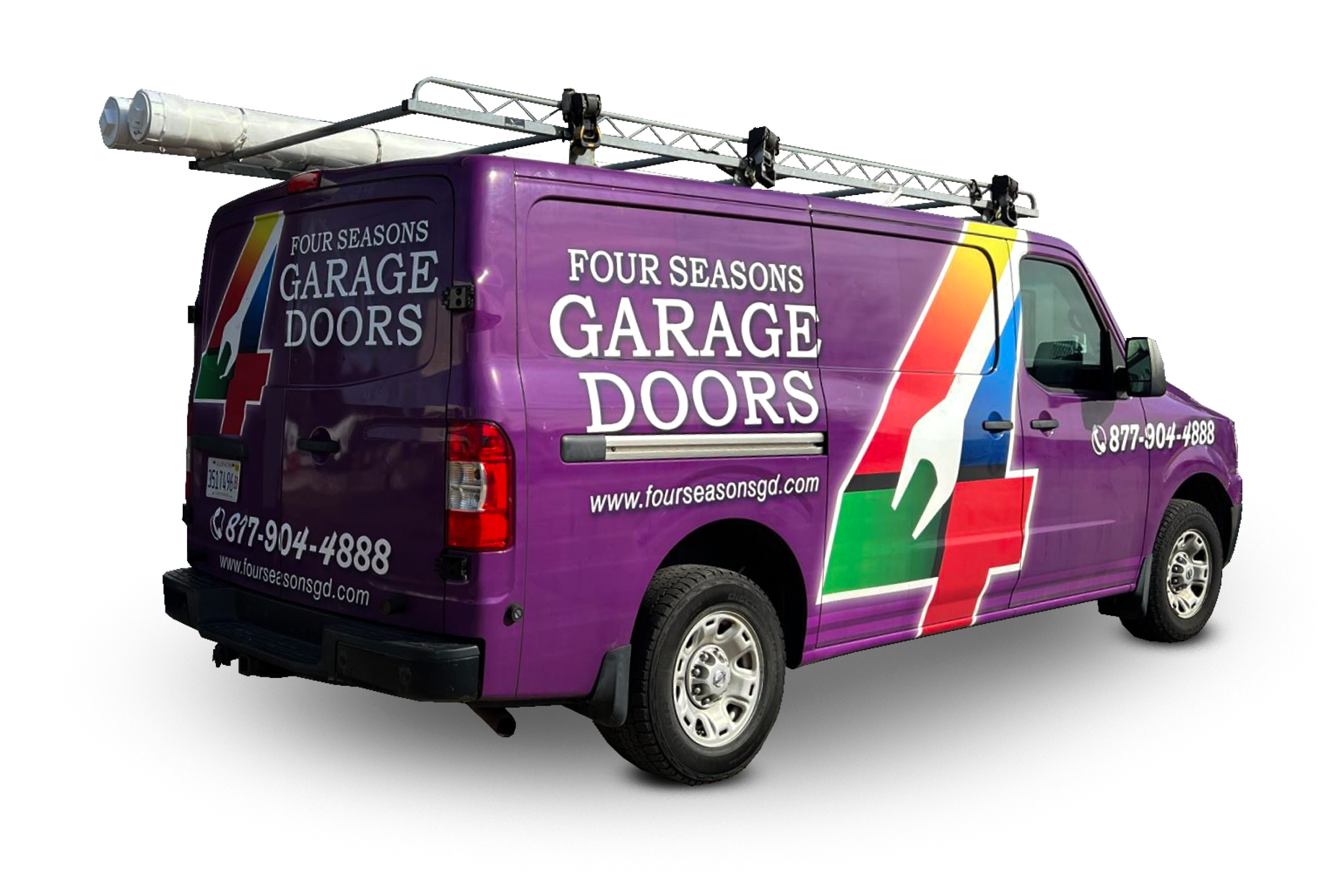Have a question or are you in need of service? Reach out online or give us a call!

Commonly Asked Garage Door Questions
- Sectional doors: Most common, consisting of panels that slide up and overhead.
- Roll-up doors: Made of steel slats that roll up into a coil.
- Side-hinged doors: Open outward like traditional doors.
- Tilt-up canopy: Single panel that tilts up and sits parallel to the ceiling.
- Slide-to-side doors: Slides open to one side along a track.
Garage doors should be inspected and maintained at least twice a year. Lubricating moving parts, checking for worn-out components, and testing the balance are key tasks.
The average lifespan is 15-30 years, depending on the material and usage. Proper maintenance can extend its life.
Noise can be caused by worn rollers, loose hardware, or lack of lubrication. It’s advisable to tighten hardware, lubricate moving parts, and check for worn-out parts.
Signs include frequent breakdowns, difficulty opening or closing, sagging sections, or outdated design. If repairs are becoming more frequent, it might be time for a replacement.
This can happen due to misaligned sensors, obstructions on the tracks, or issues with the garage door opener. Check the sensors and tracks for blockages or misalignment.
Stop using it immediately and call a professional for realignment. Using a door that’s off track can damage the door and pose safety risks.
Install a garage door opener with rolling code technology, secure your garage door emergency release, add motion sensor lighting, and ensure the door is fully closed when leaving.
Most modern garage door openers have a “learn” button on the motor unit. Press it and then press a button on the remote to sync them.
Yes, you can either purchase an insulated garage door or add insulation kits to an existing door. Insulation improves energy efficiency and helps reduce noise.
- Belt drive: Quieter and smoother, ideal for attached garages.
- Chain drive: Noisier but more affordable and durable, commonly used in detached garages.
A slow garage door can be due to worn-out springs, poor lubrication, or a problem with the garage door opener. It may also need adjustments to the opener settings.
Disconnect the opener and manually lift the door halfway. If it stays in place, it’s balanced. If it moves up or down, it may need spring adjustments.
Some minor issues, like tightening hardware or lubricating parts, can be done by a homeowner. However, complex issues like spring or track problems should be handled by professionals due to safety risks.
Most modern garage doors have safety sensors that prevent the door from closing if something is in the way, as well as auto-reverse mechanisms that cause the door to reverse if it encounters an obstacle.
Use insulated garage doors or add weatherstripping to seal gaps. Insulating the garage door helps in maintaining temperature control, especially if the garage is attached to your home.
This is usually a sign of a problem with the safety sensors or an issue with the close-force setting on the opener. The sensors might be misaligned, dirty, or blocked, and the force settings might need adjustment.
Broken cables should be replaced by a professional. Operating the door with broken cables can cause further damage or injury.
Jerky movement could be caused by misaligned tracks, worn rollers, or a problem with the opener’s motor. Inspect the tracks and rollers for wear or debris and lubricate as needed.
Torsion springs are mounted horizontally above the door and use torque to open and close the door. Extension springs are mounted on the sides of the door and stretch and contract to open or close the door. Torsion springs are generally more durable and safer.
Older models using fixed codes can be vulnerable to hacking. Newer garage door openers with rolling code technology are more secure since they change the code each time the door is used.
Common issues include dead batteries, interference from other wireless devices, or a need to reprogram the remote. Check the batteries and make sure nothing is obstructing the signal between the remote and the opener.
Typically, at least 10-12 inches of headroom is needed for a standard garage door. Low-clearance kits are available for situations where headroom is limited.
This could be a sign that the trolley carriage is disengaged, the drive mechanism is damaged, or the garage door is disconnected from the opener. Inspect these parts or consult a professional.
The cost can vary widely depending on the material, design, and whether the door is insulated. The average price for a new garage door installation ranges from $600 to $2,000.
Professional installation usually takes 4-6 hours, but this can vary depending on the complexity of the door and any necessary modifications to the opening.
It’s possible to install a garage door opener yourself if you have the necessary tools and skills. However, it’s a complex process that involves electrical wiring and mounting, so hiring a professional is recommended if you’re unsure.
To align the sensors, ensure both sensor eyes are facing each other and their indicator lights are on. Adjust the position of the sensors until the lights are steady, then secure them in place.
A blinking light typically indicates a problem with the safety sensors. It could also be a sign that the door opener is in “lock” mode, preventing the door from being operated remotely.
Popular materials include:
- Steel: Durable, low-maintenance, and available in many styles.
- Wood: Traditional and customizable but requires more upkeep.
- Aluminum: Lightweight and rust-resistant, good for modern styles.
- Fiberglass: Durable, weather-resistant, but may fade over time.
Signs include the door not opening smoothly, an imbalance in the door’s weight distribution, or visible gaps in the spring. A broken spring usually makes a loud snapping noise.